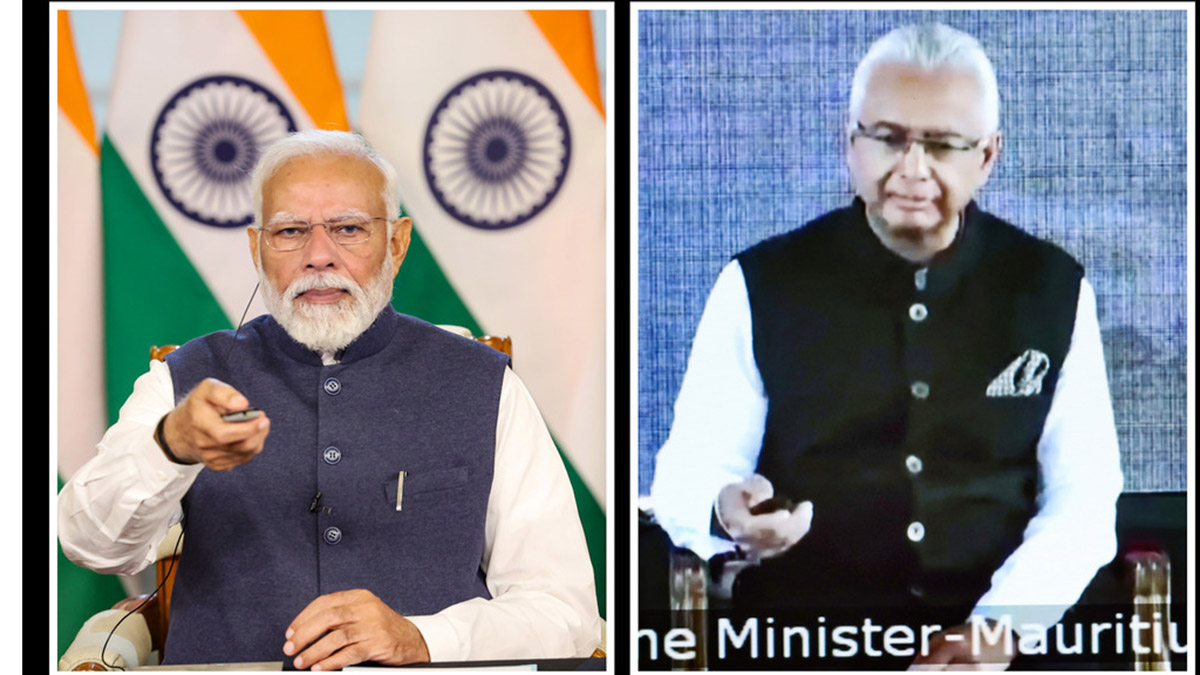Manipur, a state strife with communal conflicts and political violence, goes to polls on 4 and 8 March. Issues like economic blockade, Afspa and the anti-incumbency wave are likely to impact the poll outcome.
The major players in the state are the ruling Congress, BJP, Naga People’s Front (NPF), Trinamool Congress (TMC) and Irom Sharmila’s Peoples’ Resurgence and Justice Alliance (PRJA).
The state, which has the country’s smallest population after Jharkhand and Chhattisgarh, mainly comprises of three major communities: Meitei, Naga and Kuki. The three lived side by side for centuries and developed their heritage in parallel within their respective ethno-social boundaries. But today they engage in what can be loosely termed as tribal politics.
While most Nagas are Christians and Meiteis Hindu, their religion is not the talking point this election. So how does this diverse electorate decide upon a government, and which political party holds court with which tribe?
To understand this dynamics better, let’s start with the geographical placement of the state.
Geographical location and division of states
Geographically, the state of Manipur is divided into two distinct parts — the hills and the valley. The Nagas reside in the hills, the Meiteis in the valley. Between the hills and the valley, there are total 16 districts, seven of which were recently created by the Ibobi government (for political gains). The nine existing districts are Bishnupur, Thoubal, Imphal East, Imphal West, Chandel, Churachendpur, Senapati, Tamenglong and Ukhrul. The new districts are: Kangpokpi, Tengnoupal, Pherzawl, Noney, Kamjong, Jiribam and Kakching which are carved out of the existing districts.
Manipur is a land-locked state and shares its boundaries with three other states — Nagaland, Assam and Mizoram — and with Myanmar. The hill districts of Senapati and Tamenglong which have a greater population of the Naga community share their boundary with Nagaland. Tamenglong also shares its boundaries with Assam. Churachendpur is the only district which has proximity to Mizoram whereas Ukhrul and Chandel are the gateway to Myanmar.
Manipur has a population of around 2.3 million, majority of which are Meiteis living in the valley. The rest of the population is divided into Nagas, Kukis, Komrem and Meitei Pangal (Muslims).
Of the 60 seats in the state, 40 are in the hills and 20 are in the valley, hence the major political parties are trying to maintain a balancing act wooing the Nagas and the Meiteis.
Let’s take a look at which tribe favours what party:
Meiteis: With a population of over 1.3 million, Meitei is the oldest tribe of Manipur, in fact the state was once known as Mitei-Leipak. According to 1891 census, the Meiteis were recorded as a forest tribe and they mainly inhabit the valley, although they have presence in some of the hill districts too. Meiteis is not a recognised Scheduled Tribe by India’s Constitution, although they are wrongly categorised as tribe by the outsiders.
This indigenous tribe was converted into Hinduism in the 18th century, which is why a suffix of Devi/Singh is enforced to their names, at least by mainland India.
Politics of the valley
According to experts, the main political battle in the valley is between Congress and the BJP. Okram Ibobi Singh, the current chief minister of the state who has served three terms, is a Meitei and belongs to the Congress.
Since most of the Meiteis are confined to the valley, they have in the past held protests, demanding promulgation of the Inner Line Permit (ILP) in the state.
The ILP — a system introduced by the British and already existent in Arunachal Pradesh, Mizoram and Nagaland — protects tribal people by preventing ‘outsiders’ from buying land or settling in their area.
The Meitei wanted the ILP to be introduced in the state to prevent unrestricted entry of ‘outsiders’. One of their major grievance was that the they could never buy Naga land in the hills but that was not the case for their land.
During the Meitei protest, schools were shut for weeks, prices of basic commodities rose and the streets were filled with violent protesters. Witnessing this scene, the Manipur Assembly passed three bills aimed at giving more rights to indigenous groups who accuse “outsiders” of taking their land and jobs.
That eased the Meiteis, but upset the Nagas and Kukis, and hence a visible divide between the communities is visible.
The other tribes have often taken up arms to protest against the special treatment Meiteis get from the state government. Hence in all likelihood, the Meiteis of the valley are in support of the Congress government, despite the anti-incumbency.
With BJP’s entry in the state, questions are raised whether the Hindu Meiteis will be swept away by the Modi wave. Too many Congress leaders have already jumped ship and alleged themselves to BJP, however, experts believe that the Meiteis still view the newcomers — BJP with suspicion.
According to Firstpost writer Seema Guha, the Hindu Meiteis see the BJP as backing the Christian tribes living in the sparsely populated hill areas of the state. This is because of the Naga People’s Front (NPF) ruling Nagaland is aligned to the BJP. Meitei’s are also wary of the BJP giving in to the NSCN-IM demands.
However, the RSS-BJP workers have made inroads in the state with their work with the tribals, and pointed out the lack of development in the state by the Congress government. This is reflected in the act that in September 2016, when BJP president Amit Shah held a meeting in Imphal, there were reportedly about 30,000 booth level workers attending it. BJP leaders are promising a wave of development in the state with better infrastructure and better governance.
Manipuri people have historically chosen a parties based on leader representing their constituency as opposed to the face of the party, says a local expert. If the leader promises to work for the people and shows potential, he gets elected. With an increasing number of Congress leaders leaving the party to join the BJP, there is an uncertainty regarding which party the Meiteis will choose.
Nagas: The Nagas are an indigenous tribe which became a part of the British India in 1881 after the British annexed Assam in 1826.
The total population of Nagas in Manipur is more than three lakh. One of the oldest demands for this indigenous tribe is the creation of Greater Nagaland — a state which would contain parts of Manipur.
This ethnic group is an amalgamation of various sub-tribes like the Tangkhul, Maram, Anal, Maring, etc. and also the old Kukis who like to be recognised as the new Nagas.
The Nagas mainly reside in the hills in districts like Senapati, Ukhrul and Tamenglong which have close proximity to the Naga state Nagaland.
Politics of Naga Peace Accord
On 3 August, 2015, Prime Minister Narendra Modi announced a peace deal with Nagaland insurgents which rests on a breakthrough formula not involving redrawing of the state’s borders.
This was touted as the Naga Peace Accord, the contents of which were not revealed to the media. The deal allegedly involves creating a mechanism which would create institutions like allowing autonomy to Naga tribes living in Manipur.
Recently Congress leaders like Rahul Gandhi and Ibobi criticised the deal made between the Government of India and the NSCN (IM), which is the largest Naga rebel group, and asked the government to reveal the contents of that draft.
A report by The Indian Express suggested that a degree of autonomy in Naga homelands would be part of the Naga Peace Accord that hopes to please all factions in the state. This includes a majority of the Meitei people, who are also sensitive about territorial integrity
The BJP hopes to use the Naga Peace Accord as a means to prevail peace in the state and garner votes this election season.
Anti-incumbency politics
The anti-incumbency in Manipur is largely driven by the Naga community and its sub tribes. The United Naga Council (UNC), which claims to be a common platform for Nagas in Manipur, imposed a blockade of two key highways — Imphal-Dimapur (NH2) and Imphal-Jiribam (NH37) — from 1 November, 2016 to protest against the state government.
In December, 2016, Ibobi declared creation of seven new districts for better administrative purposes. The number of districts in Manipur from nine to 16. The Nagas living in Manipur took offence to this creation. A local Naga leader talking to us said, “This is our land. The decision to divide the land was taken without our permission.”
The UNC called tripartite meetings with the Government of India and the state government to resolve the issue of creating new districts. However, the Ibobi government deferred claiming that no administrative decisions could be made till the assembly elections concluded.
Hence with the green signal from both the NSCN-IM, the UNC organised an economic blockade. Manipur, like many of the North Eastern states, is land-locked and the trucks are the mainstay for suppliers. As the national highway runs through Naga-dominated areas, the valley can be easily cut off.
The NDA-led government at the Centre has shown enthusiasm to resolve the economic blockade issue, however, the state government has not lifted a finger. The Nagas perceive this as a betrayal by the Congress govt and hence find themselves leaning towards the outsiders — BJP — who promise to bring peace and development.
Kukis: With a population of over 2 lakh, most of the Kuki sub-tribes reside in the Churachendpur district in south Manipur. Some Kukis also reside in Naga dominated Senapati and the old Kukis which have a small population of over 30,000 reside in Naga areas identifying themselves as the new Nagas.
The Kukis too have a history of violence in the state. On 1 September, 2015, nine civilians, including an 11-year-old boy, were killed in Churachandpur district, Manipur. But till date, the bodies of the dead have not been buried. The nine people killed in the firing are now called “martyrs” in Churachandpur.
The deaths were a consequence of the three bills passed by the Manipur Legislative Assembly — the Protection of Manipur People Bill, 2015, the Manipur Land Revenue and Land Reforms (Seventh Amendment) Bill, 2015, and the Manipur Shops and Establishments (Second Amendment) Bill, 2015 — on 31 August, 2015.
The bills were passed in response to the demand of the valley people demand for the implementation of the ILP system in the state.
The interpretation of these bills caused all the trouble in this Kuki-dominated area. While the valley people, who are predominantly Meiteis, viewed the bills as a mechanism to protect the state from outsiders, the Kukis (and also the Nagas) viewed it as a threat to their identity and land.
The non-burial of those nine bodies is viewed as Kukis silent protest against the Congress government for implementing the ILP. According to local experts, there is dissatisfaction among the tribe over the handling of state affairs by the Congress. Hence it is safe to assume that there is major anti-incumbency in these constituencies against the Congress.
New players with no footing: Human rights activist Irom Sharmila, who was on hunger strike for over a decade for the removal of the Armed Forces Special Powers Act (Afspa) from Manipur, is also in the fray. Her party, Peoples Resurgence and Justice Alliance (PRJA), with little money or organisation has also fielded five candidates.
Irom Sharmila’s popularity in the state could have won her a lot of support, however, her decision to end her hunger strike in 2016 turned a lot of people against her. She is also not viewed as a serious career politician by the people of Manipur.
The TMC is contesting in 24 seats in the 60-member Assembly. In the 2012 Assembly polls, the TMC had bagged seven seats, but later all of its MLAs switched sides joining either the Congress or the BJP.
Hence it can be safely concluded that the real fight this election will be between BJP and Congress, or whichever party which manages to buy the most amount of votes.


)




)
)
)
)
)
)
)
)